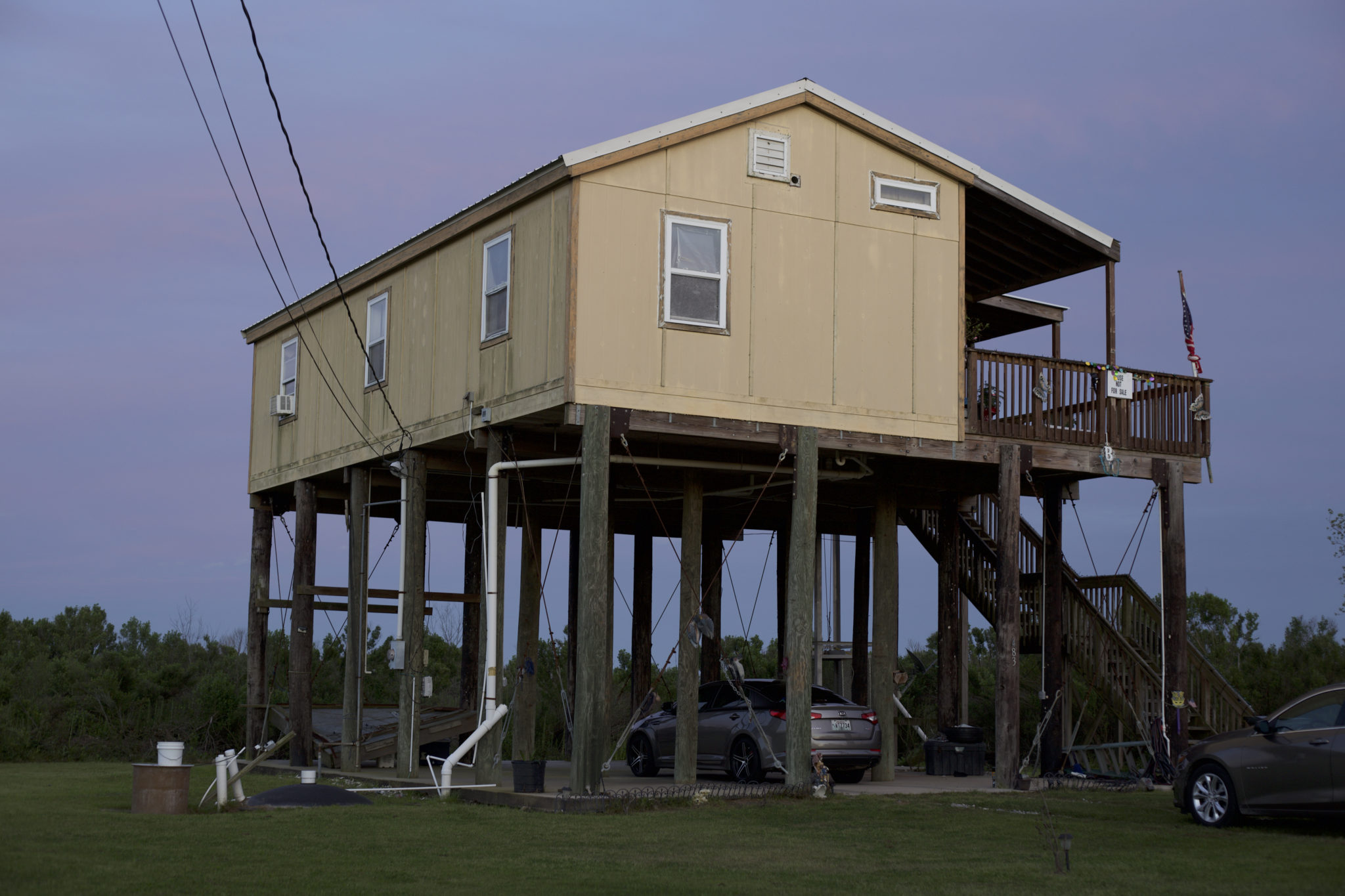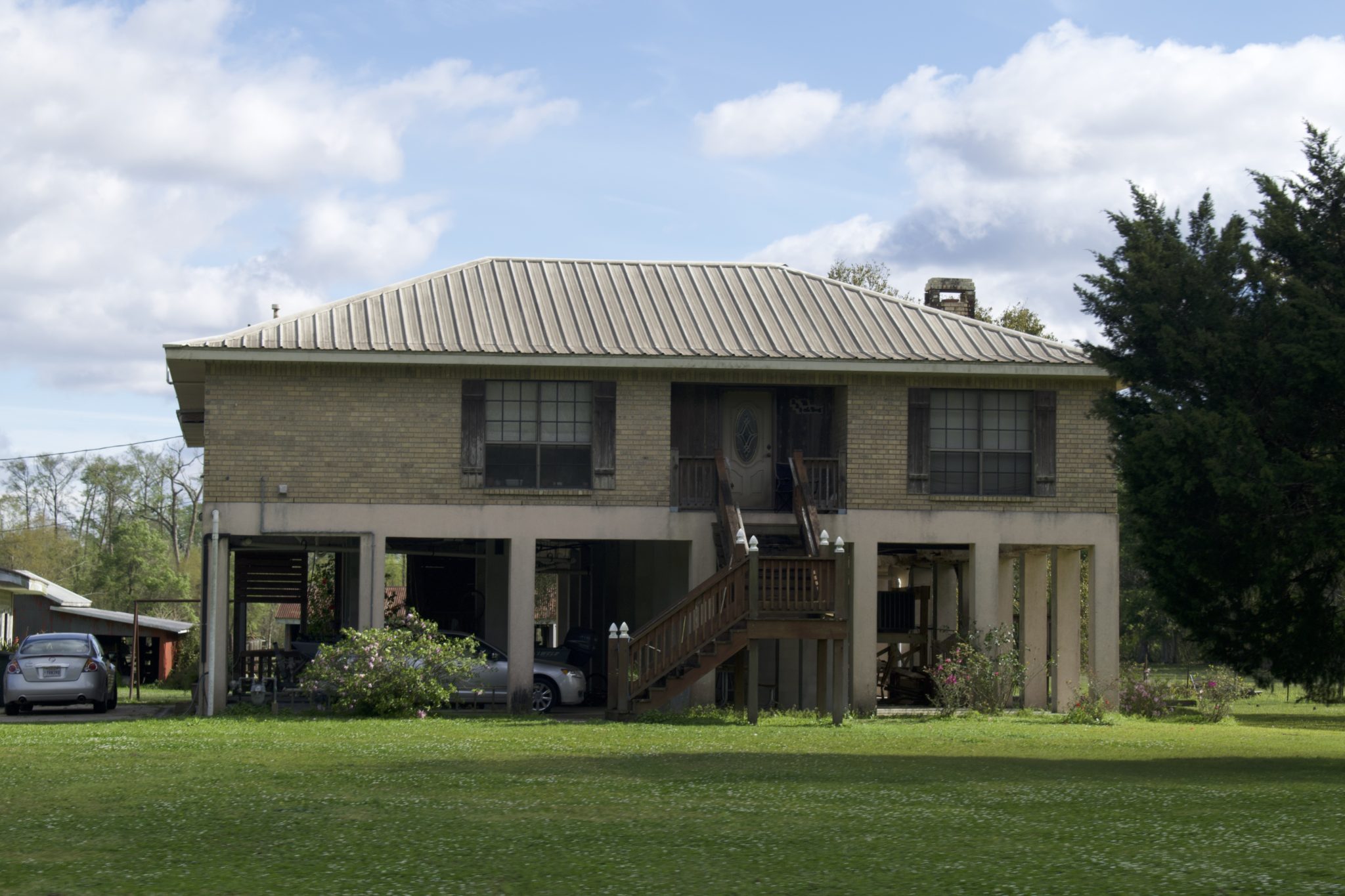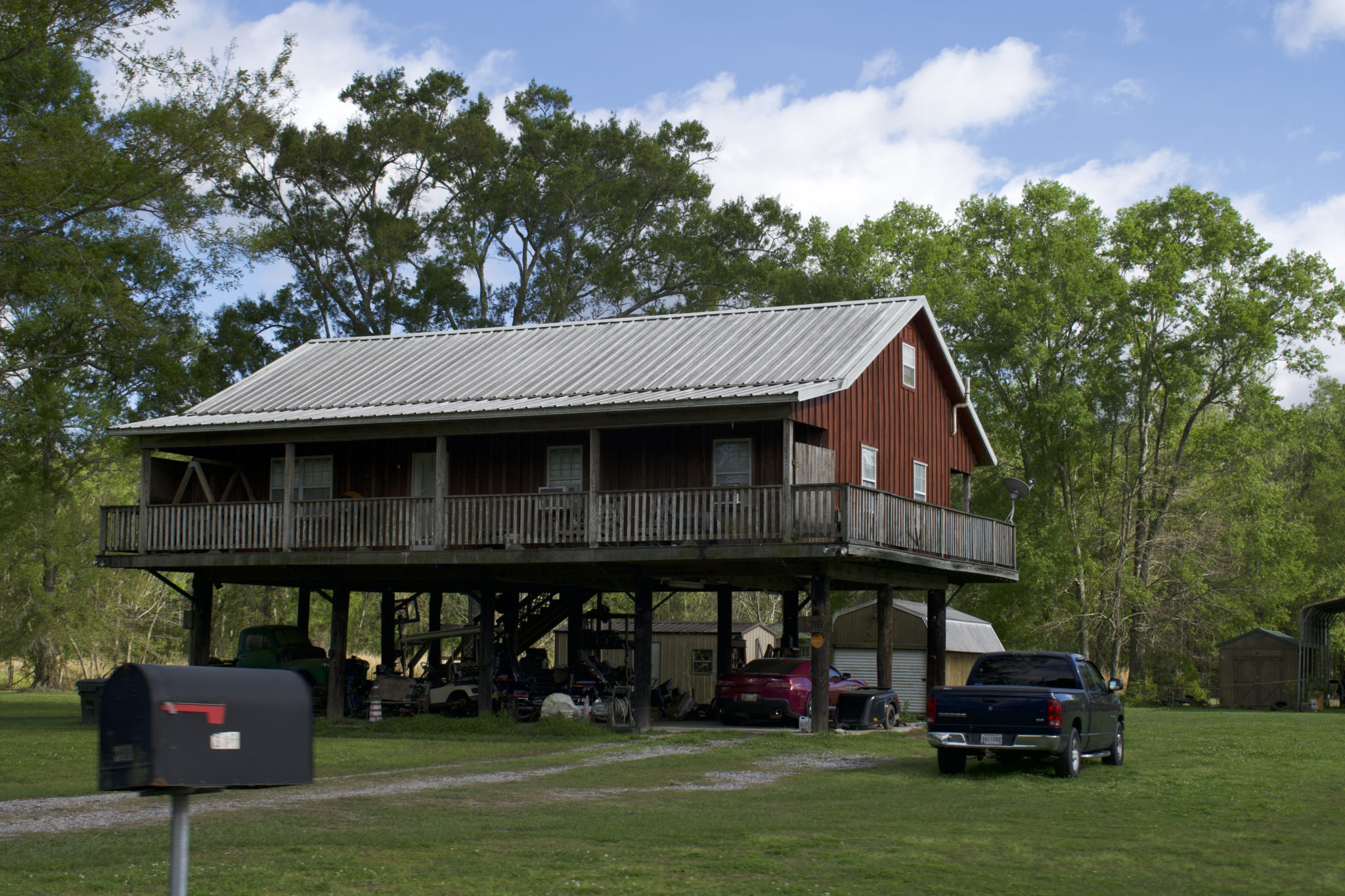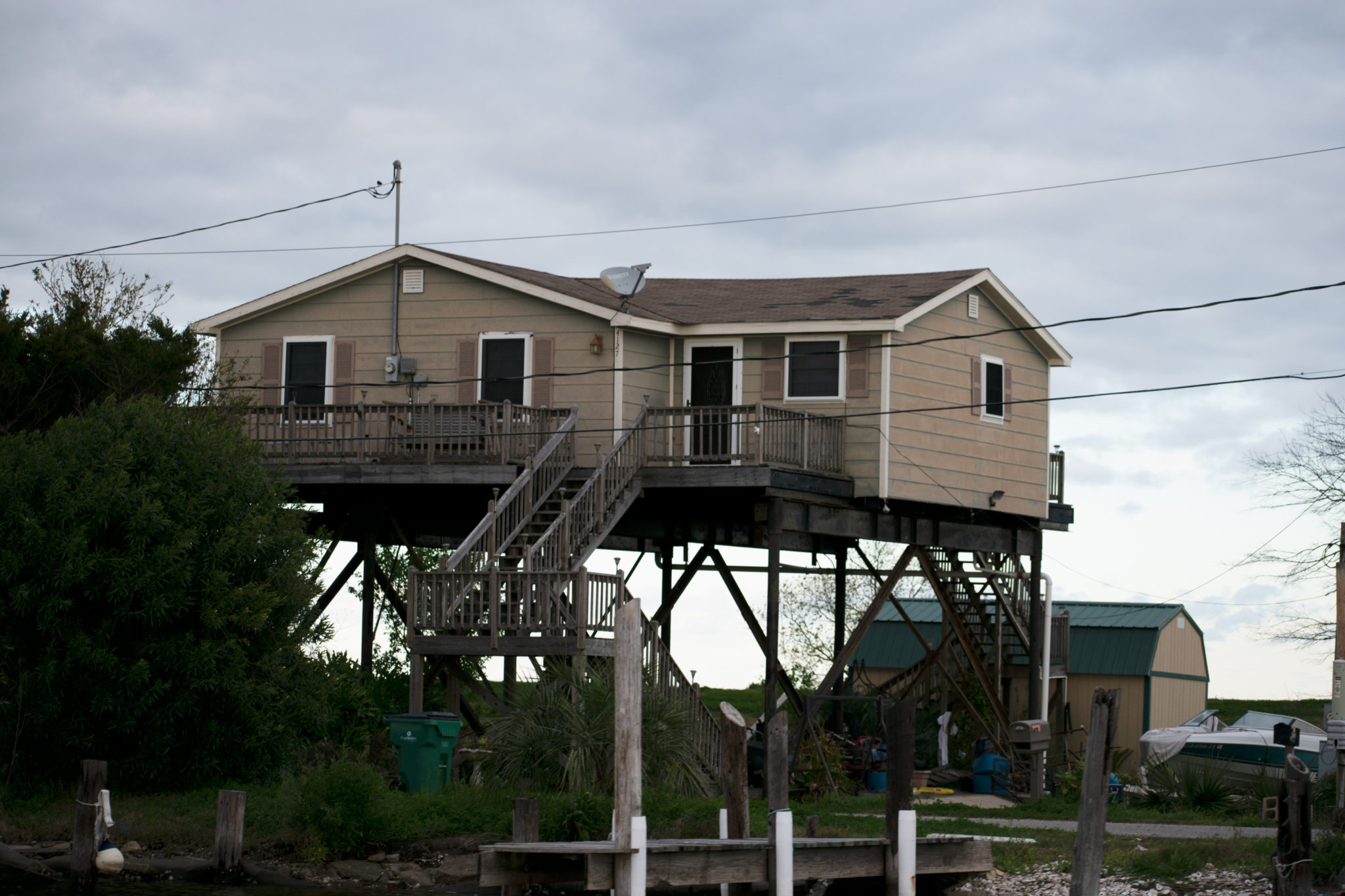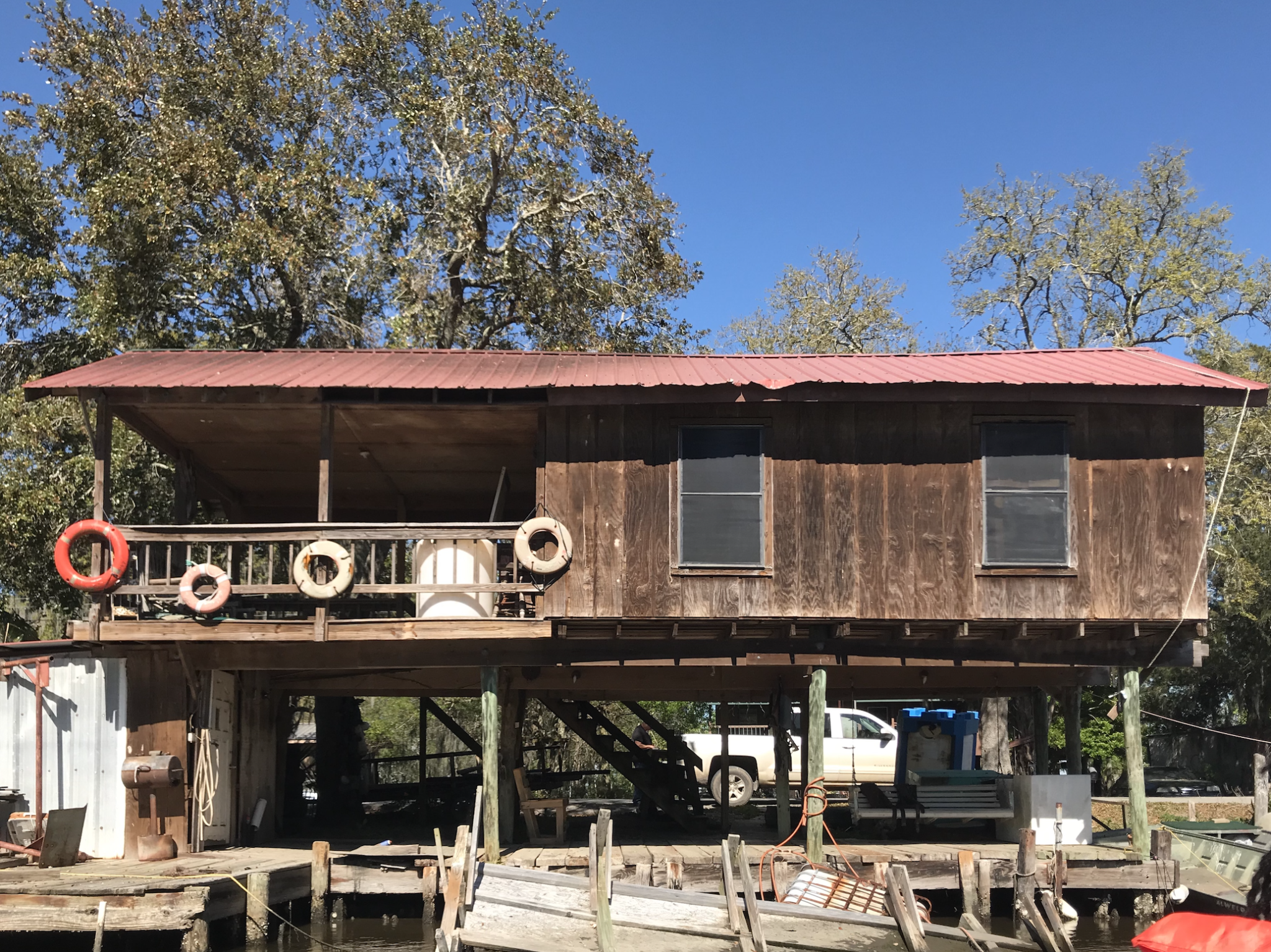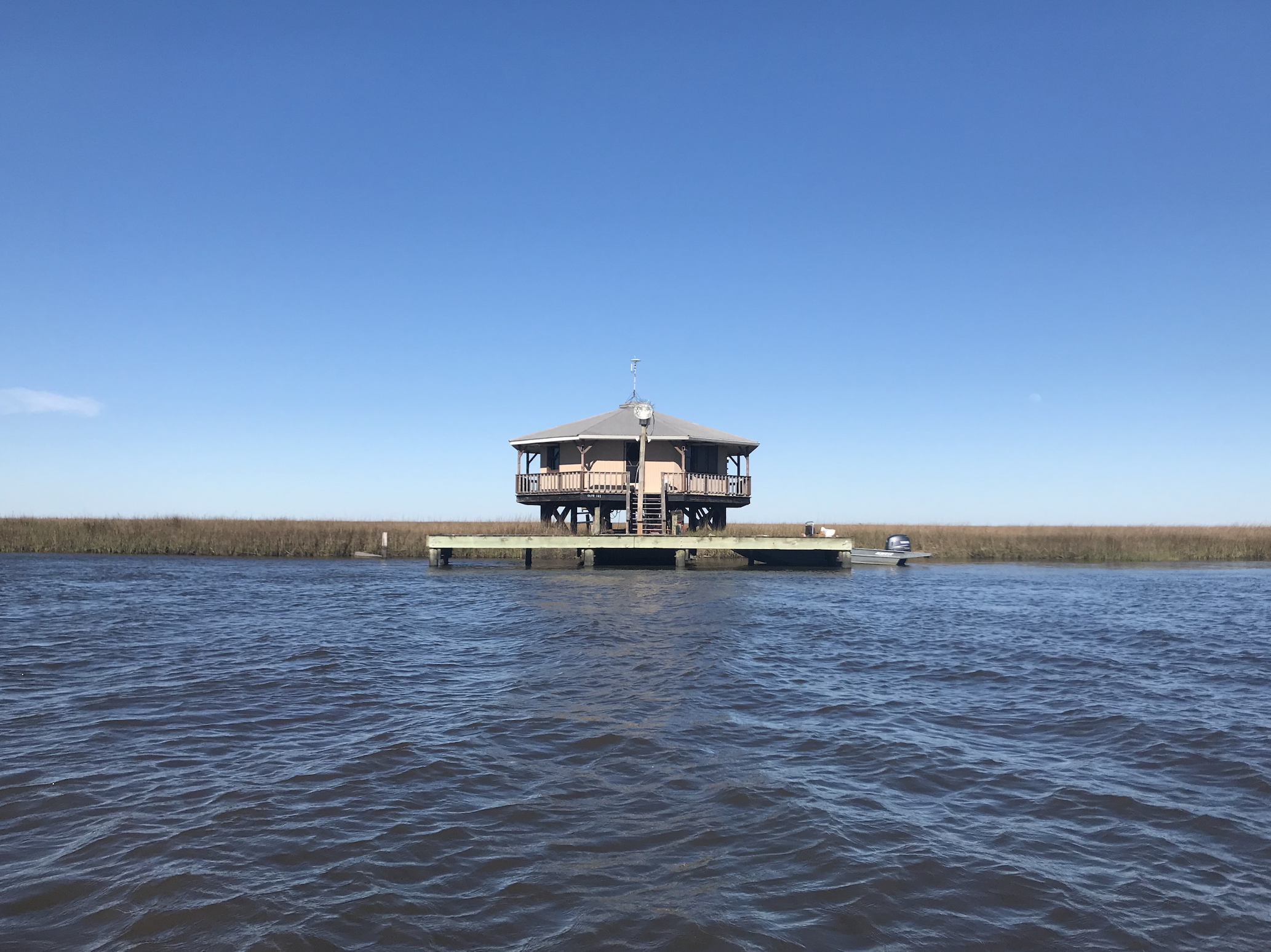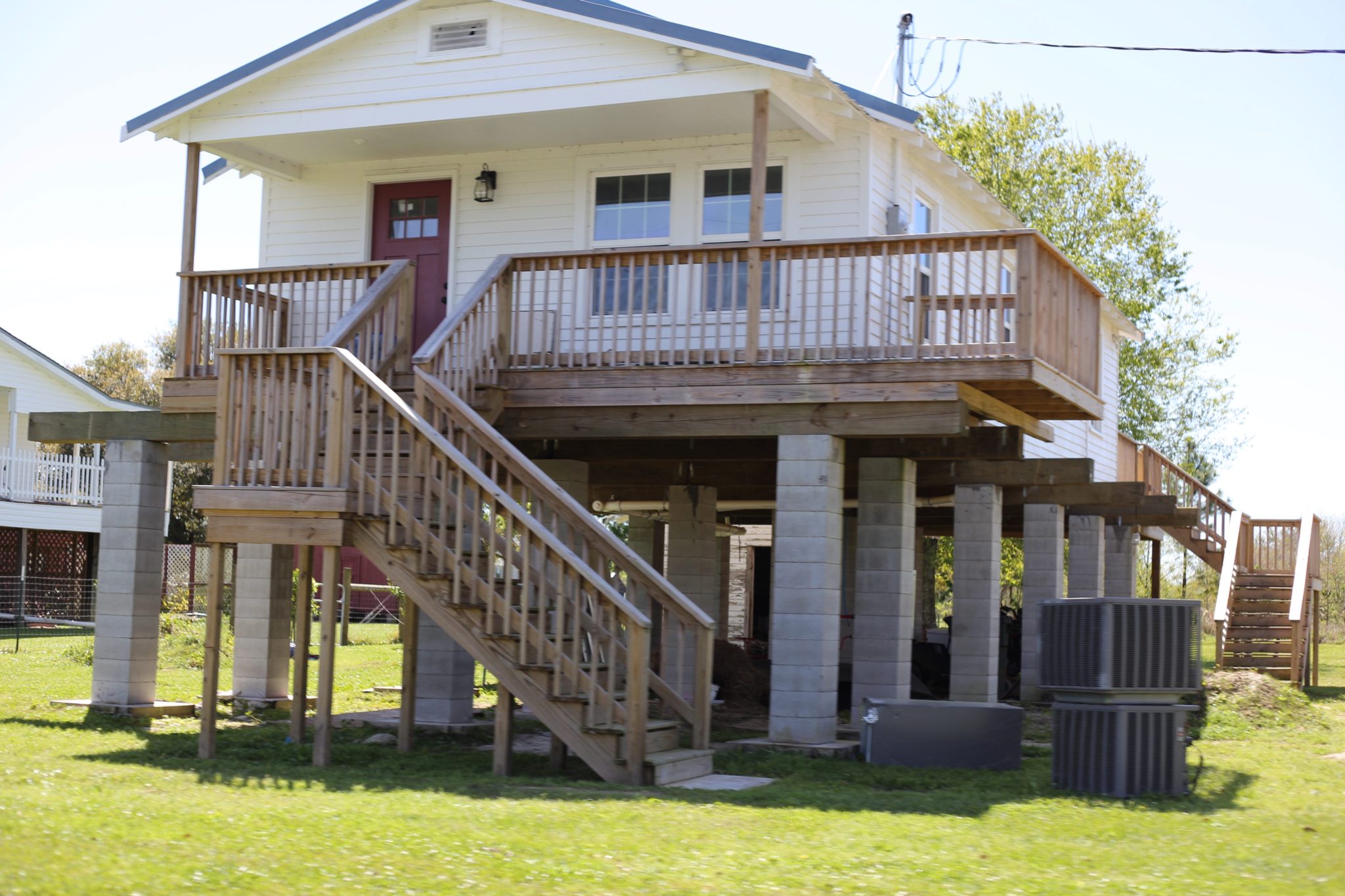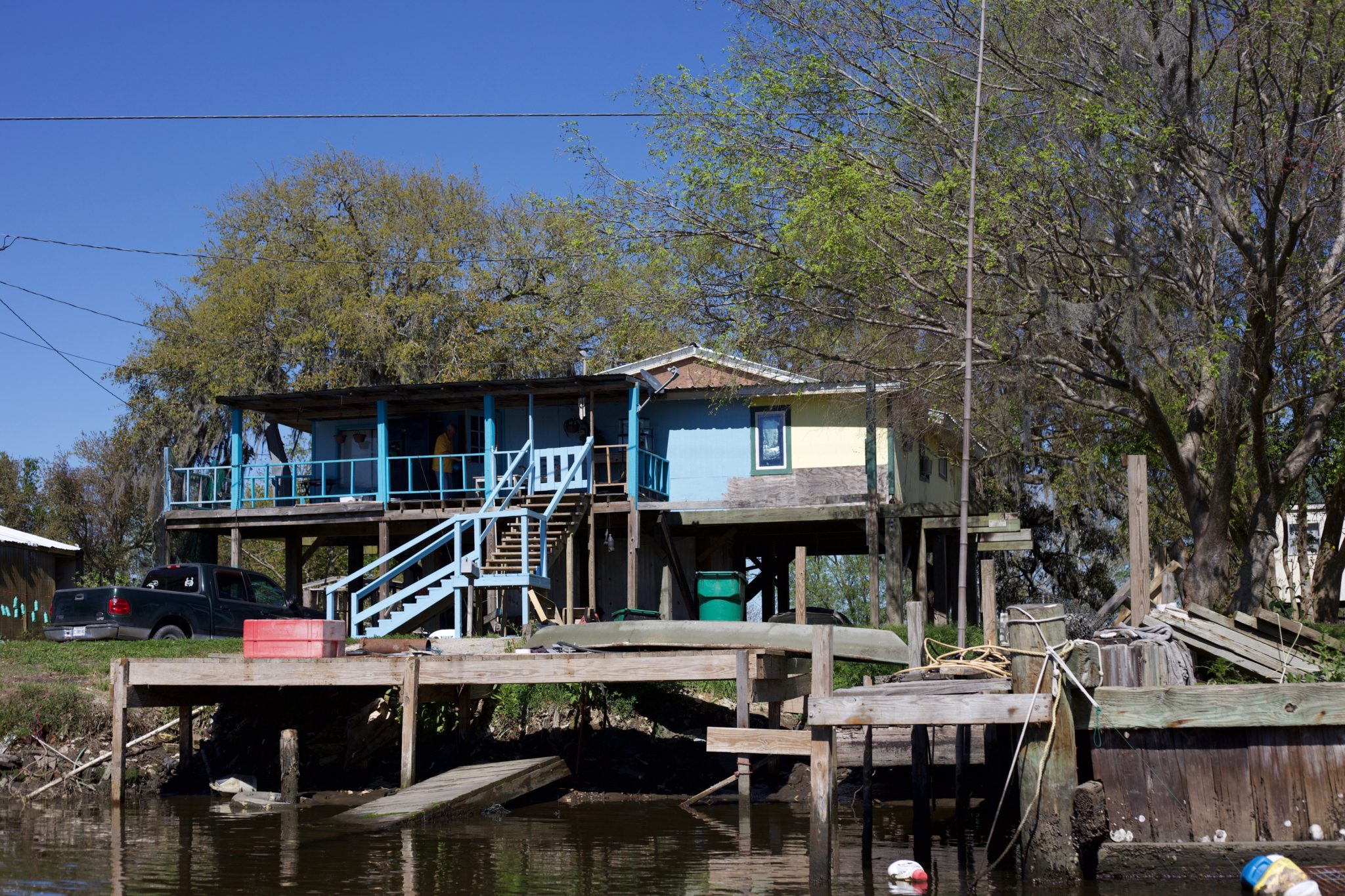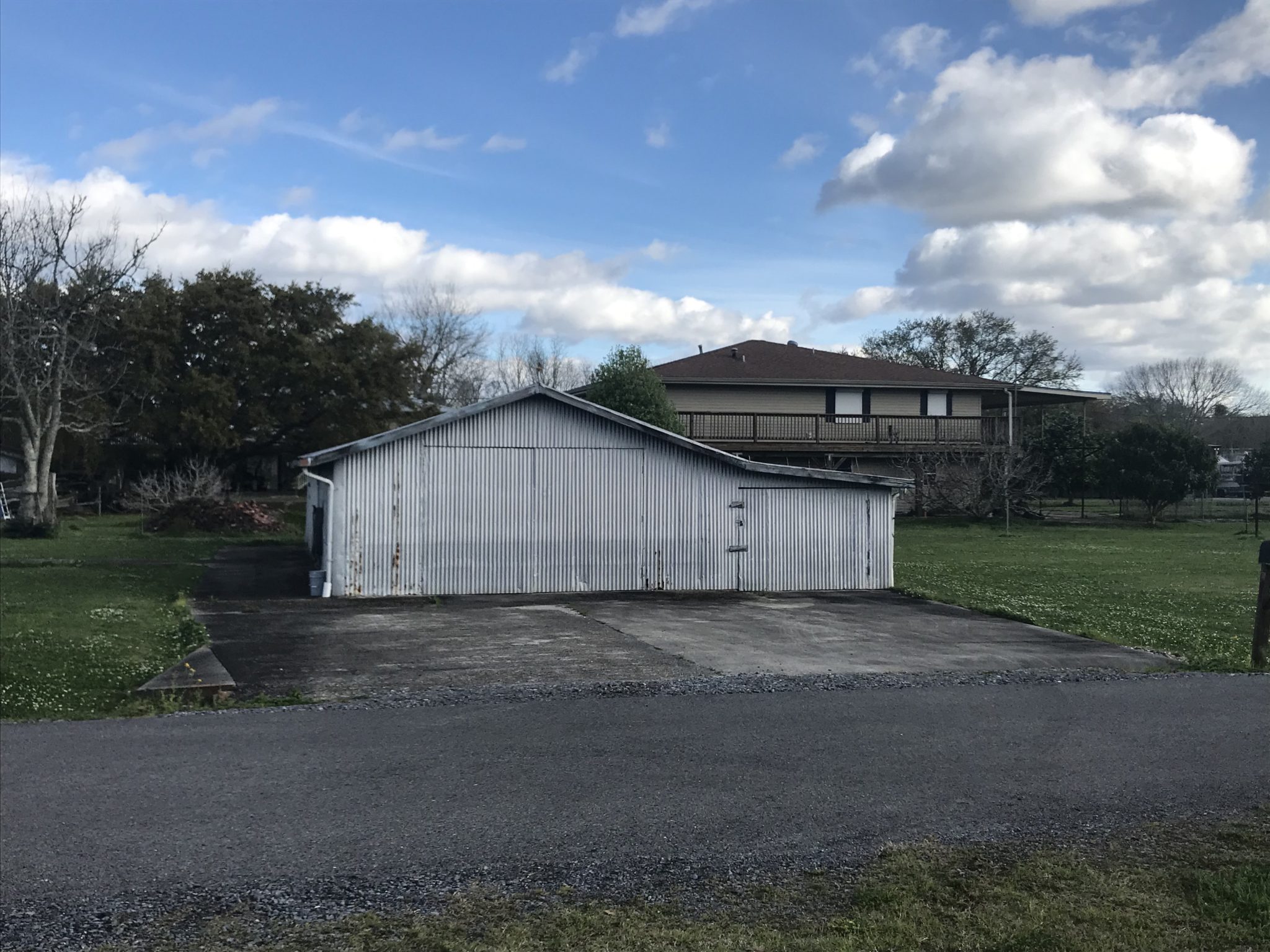One turn into almost any Louisiana coastal town and you are greeted by larger-than-life homes – but not in the sense you may be thinking. These houses sit like giants in the sky on stilts.
They are all typically one-story homes that get raised many feet above the ground. A usual basement turns into open air and elevators are sometimes attached for transportation of items.
The stilt homes serve a big purpose in coastal states like Louisiana: safety from expected coastal flooding, especially during hurricane season.
Cookie Naquin is a resident on the sinking island of Isle de Jean Charles, Louisiana. She lives in her one-story stilt home with her partner and grandchildren. It’s like any other American home – besides the fact it’s raised 13 feet above the island ground.
Cookie has lived on the island for over 50 years and home she resides in now was originally her parents’ home. It’s one of the houses on the island that started off on the ground, then was built up. A lot of homes in the area were raised in 2005, according to Naquin.
“Homes here started on the ground,” said Cookie. “But many had to be raised after Hurricane Rita.”
But her home wasn’t stilted until 2009 when her family got a loan from The Road Home, a federal program set up to help Louisiana residents after the damage done by Hurricane Katrina and Rita. The program has completed all rebuilding initiatives and is closed, according to the organization’s website.
The home was lifted off the ground and raised 13 feet, but with each storm the waters keep getting higher and higher, according to Cookie.
Living just next door to Cookie is her relative Bert Naquin. The island is home to a very knitted tribe making everyone family at the end of the day. While appearing to be spaced out, they all live pretty close to one another, making a wall of high homes.
Bert and her family have lived on the island for pretty much her whole life. She’s one of five siblings and also still resides in her family home.
Their home was built by Habitat for Humanity after the irreversible damage from Hurricane Katrina in Louisiana.
Bert’s home sits a whopping 15 feet in the air. The porch steps seem endless and if one gust of wind comes back, you can feel the whole thing shake and swing.
The height gives a good view, though, and from the porch you can see for miles across the island. A lot is now mostly water, but next to Bert’s home sits a forest. That used to be regular homes, according to Bert.
“My family used to live there,” said Bert, pointing to the overgrown patch of land next door. “Used to be all up and down the street.”
Frequent storms and rising waters have made elevated houses a real necessity on the coast.
Some homes are automatically elevated upon construction, as seen in Bert’s case, but many require elevation overtime to accommodate the weather.
Prices for raising a home range. The most basic costs can be anywhere from $11,000 to $15,500, according to home elevation business A-Home Team Elevation & Construction’s website.
Other factors can come into play with price including house size, permits, and existing condition. With these factors and many others figured in, the price range can jump to around $30,000 and $100,000.
How high homeowners actually want to go with their home is another considerable factor. Houses are typically elevated based on the owner’s desired or required Flood Protection Elevation (FPE), according to an elevation guide by the Federal Emergency Management Agency (FEMA).
A home’s FPE should be at least a foot higher than the Base Flood Elevation (BFE), FEMA recommends. This can result in a home elevation being three or four feet, which does not alter too much of the outside, says FEMA, but many direct coastal homes have had to result to much higher plans.
Hurricane Rita alone brought flooding of up to an estimated 15 feet, according to FEMA, which was plenty to lead Cookie and her family to raise their home. More recently, in 2019, Hurricane Barry flooded parts of Louisiana, including Isle de Jean Charles, with waters as high as seven feet, according to Cookie.
Higher elevations can serve some benefits outside of flooding protections. There is some potential to give homes new additions.
Roubion Shoring & Construction, an elevation and construction company located around Louisiana, recommends the addition for an underground garage if raising a home over eight feet, according to their website. They even have an option for a “basement.” They use special steel beams to cover the weight, according to the company.
Mainly, though, these home elevations can save personal belongings and, potentially, lives.
“The sky is the limit,” reads the Roubion Shoring & Construction website and that is all too true for these number of coastal homes battling the onslaught that comes with storm after storm, flooding after flooding.
